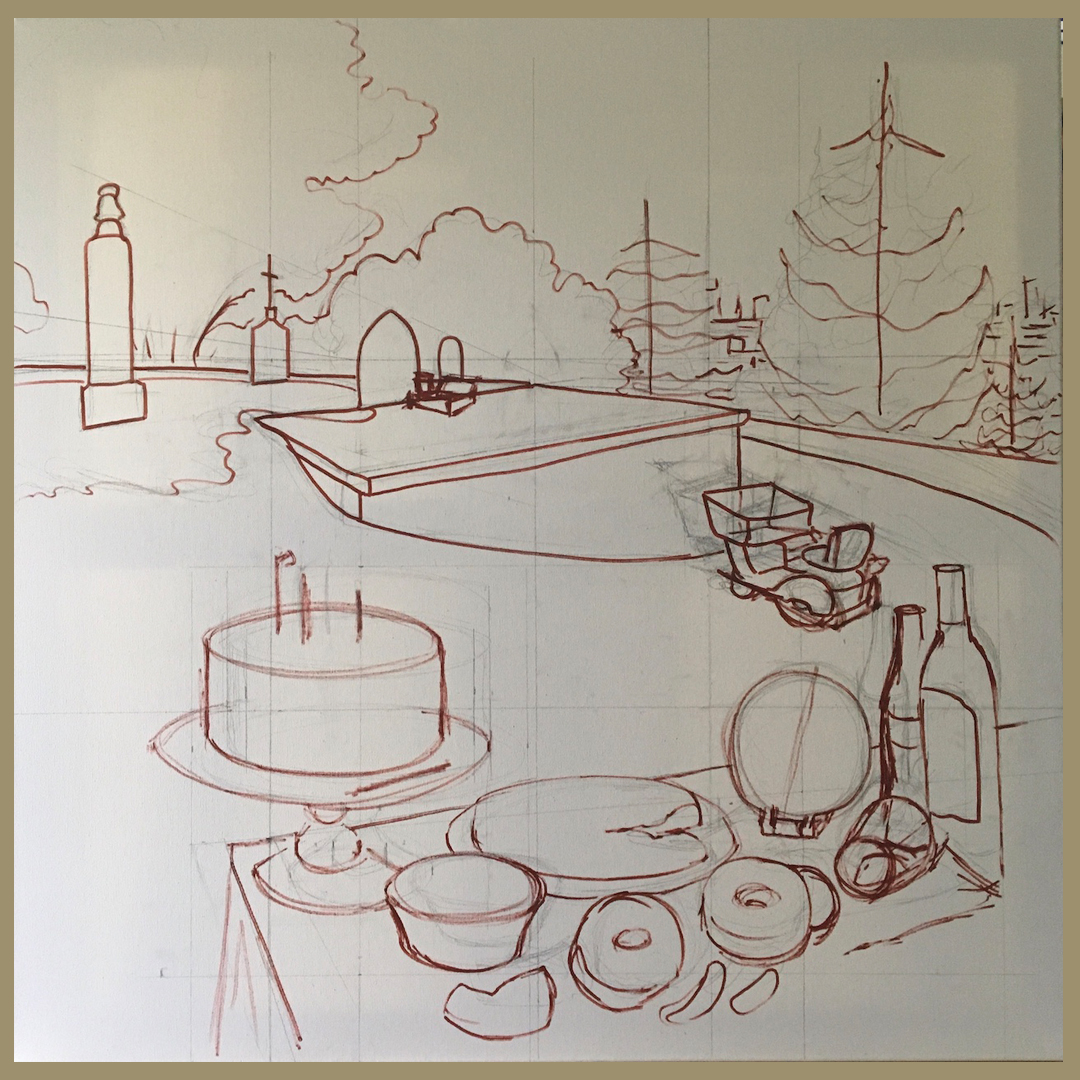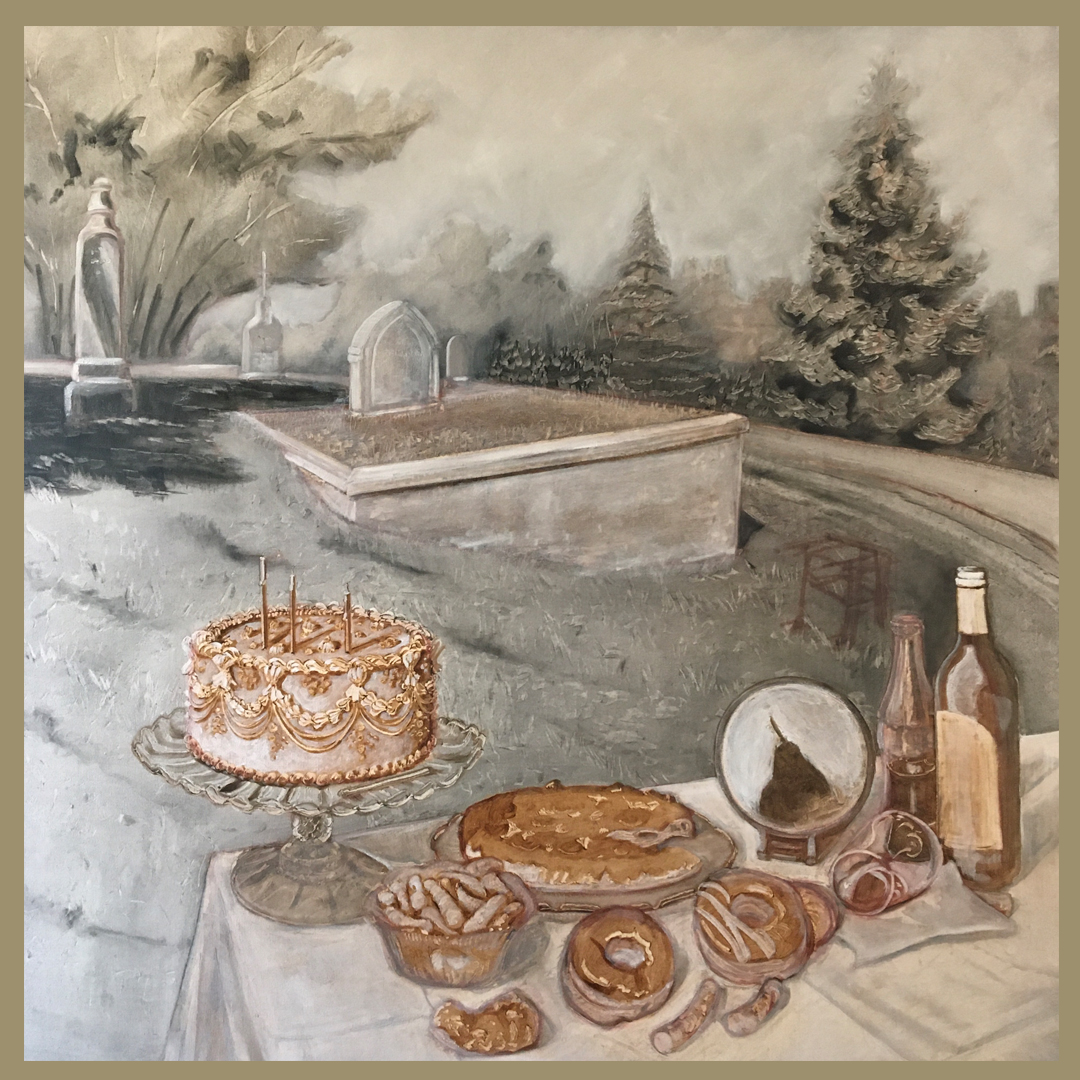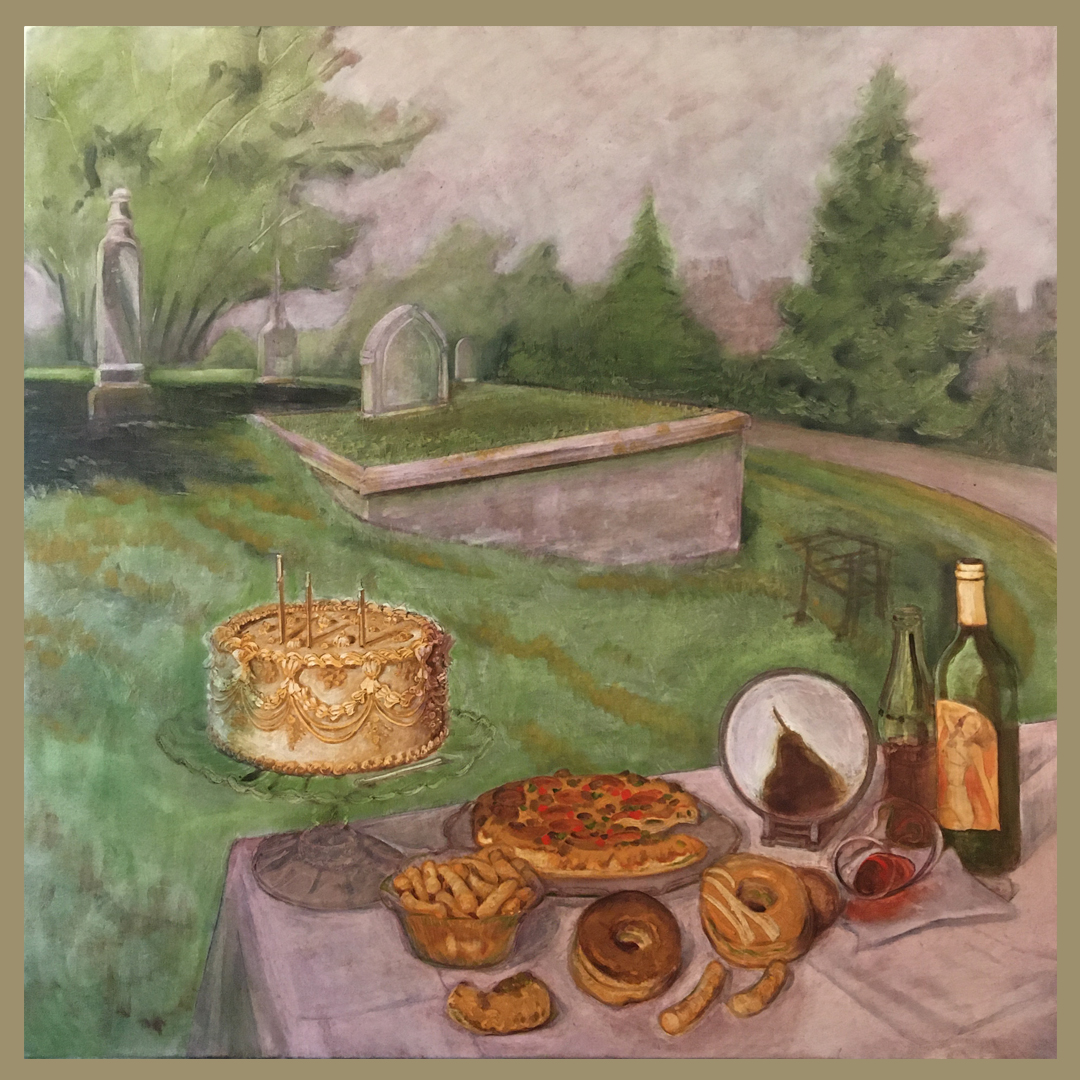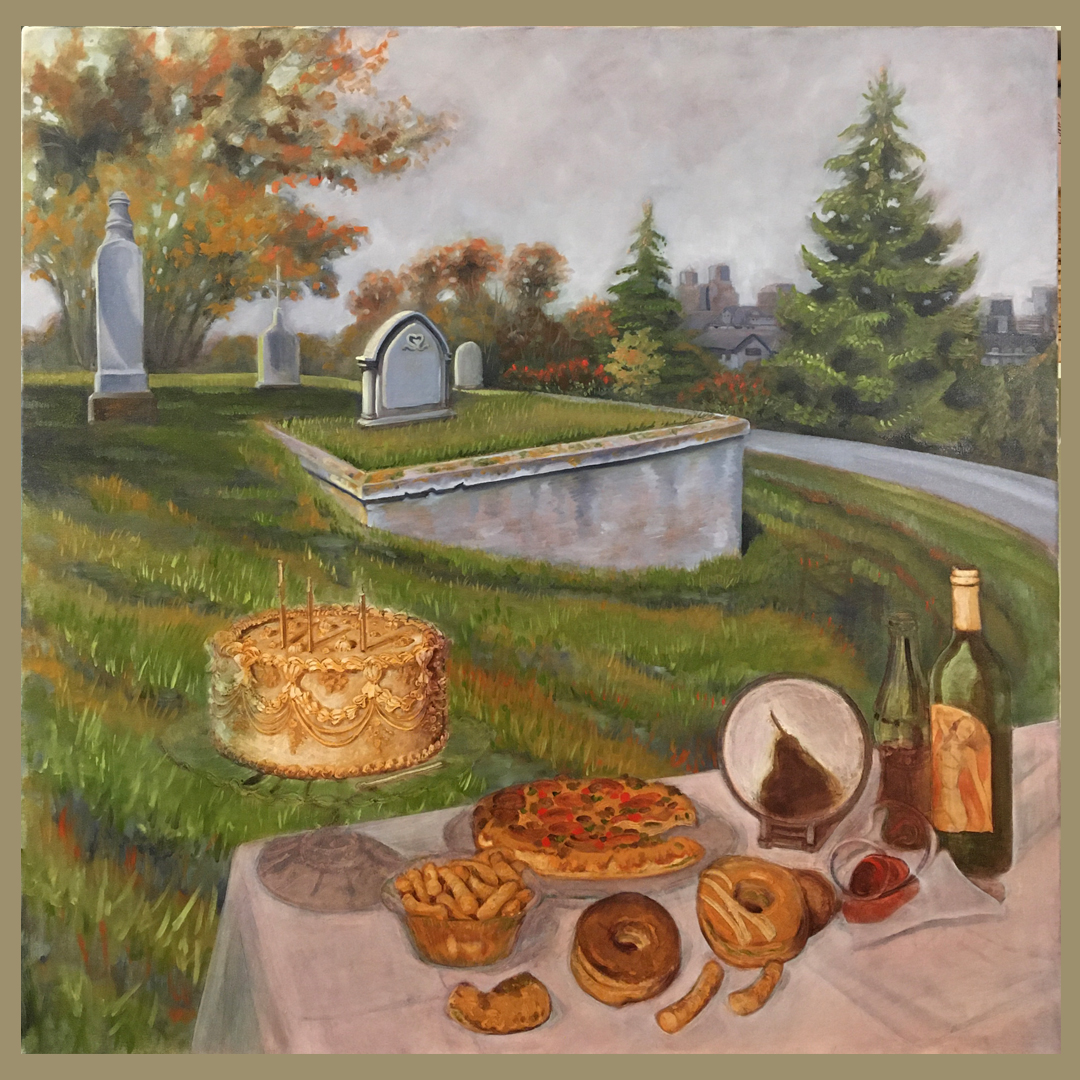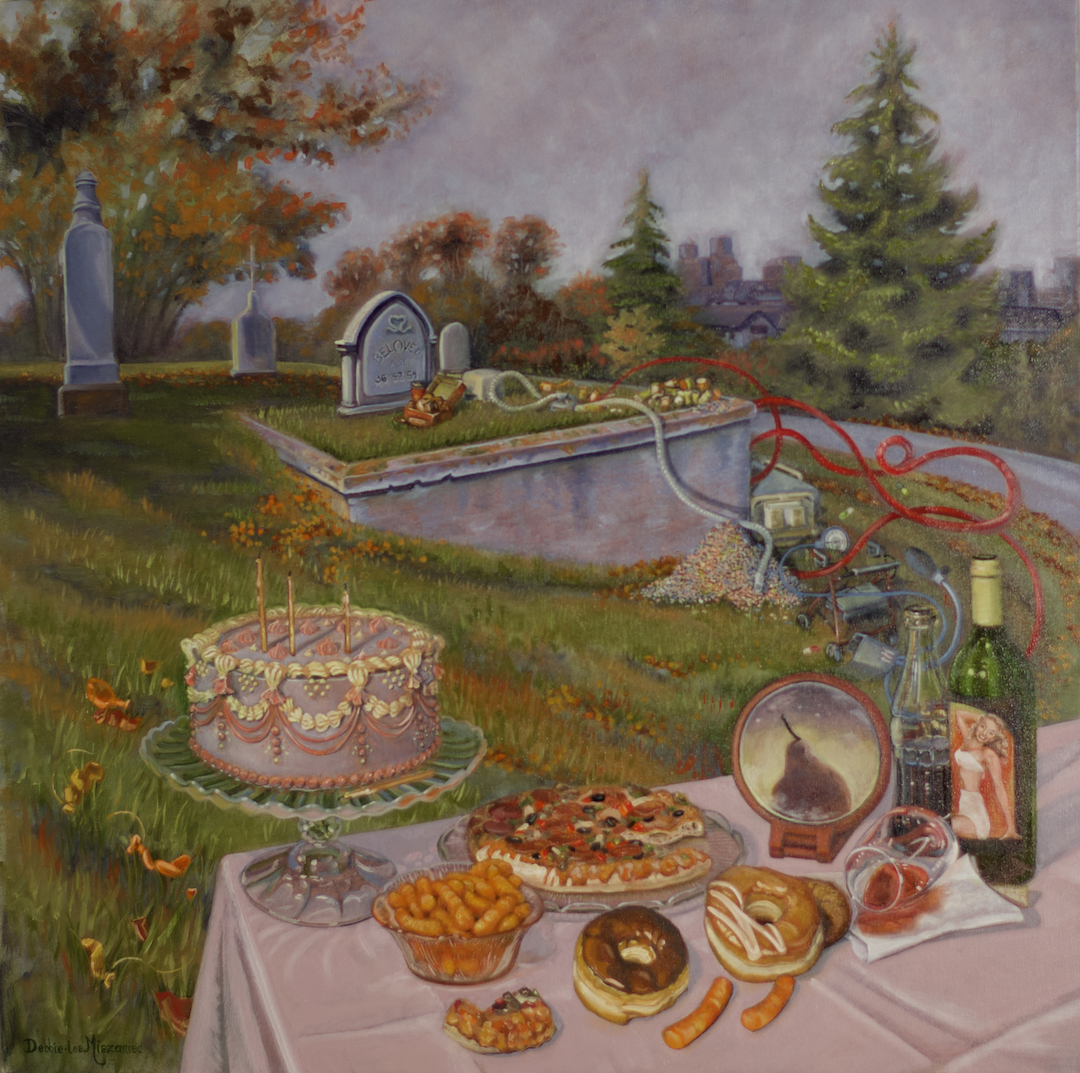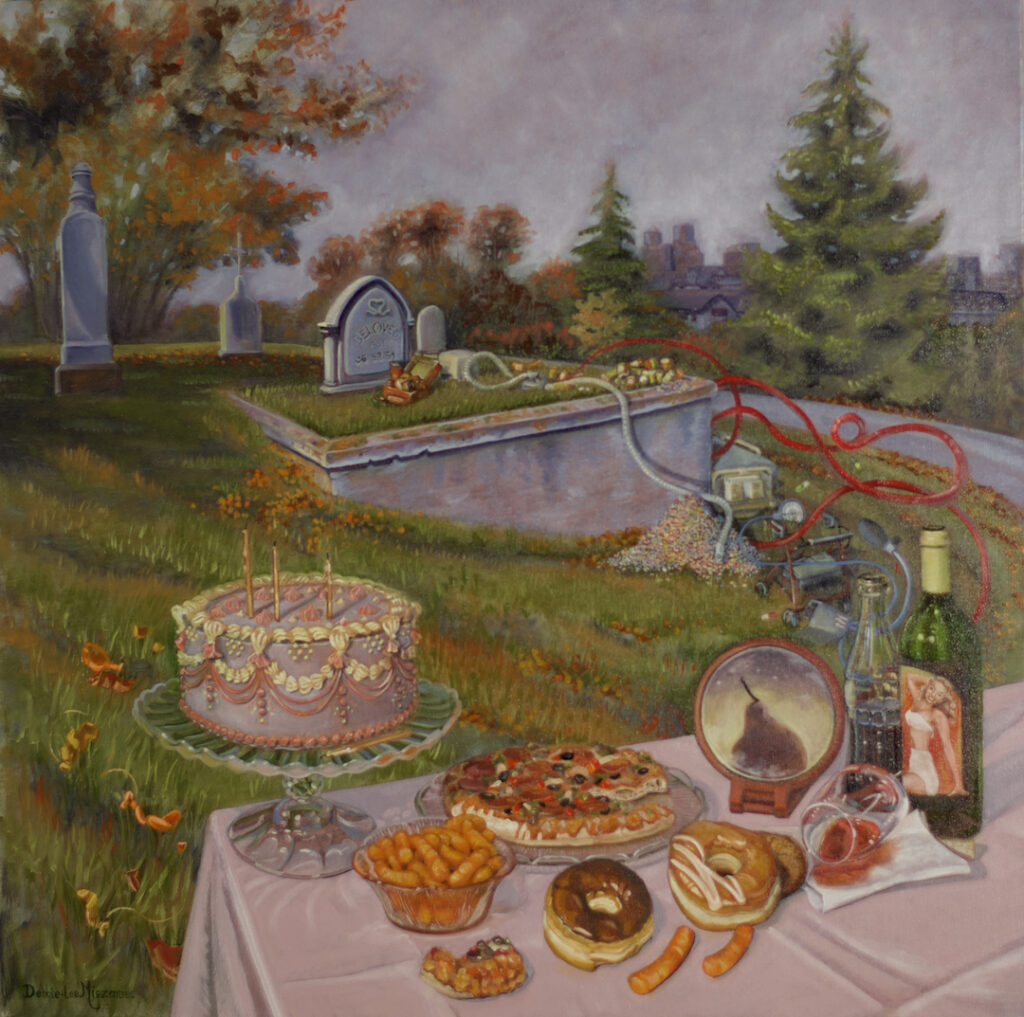
Welcome to the second instalment of a series of blog posts going more in-depth into the thoughts and ideas behind each of the paintings in the Earthly Delights series. You can read the first instalment here. The series is based on my experience navigating health and diet culture as a long term participant. You can read the full background by following the link to that blog post below:
Project Background: You can read more about the project background here.
On the other side of Reader Rock Gardens, separated by an iron fence on the peak of the hillside is Union Cemetery, founded in 1890 looking north and west across the bustling centre of Calgary. A Story As Old As Time pictures the fence that divides the gardens from the cemetery, and you can see gravestones in the tree window to the right of the cupcake. As you can guess this makes The Party Ended Too Early the next mise en scène in this series. (Side note, the paintings are not necessarily conceived of as being in a definite order, however these two definitely begin the series.)
There are many entry points for the individual into diet culture. It could be argued that evading the pressure to participate in diet culture would actually be an exceptional circumstance for most in western culture, tied as the image of the thin body is to conceptions of morality, meritocracy, productivity, beauty, desirability, good health, self control and personal responsibility.
This painting is complicated for me, so forgive me if words don’t do it justice (probably why I’m a painter, not a writer). It marks the transition of my own participation in diet culture from the recreational dabbling of my adolescent preoccupation with appearances and an emulation of the postures of adulthood, into an awareness of mortality, grief, loss and fear of discrimination that pushes one into a serious commitment.
The numbers on the grave stones are not dates but the ages of those beloved people lost too soon to morbid obesity. Obesity was not the cause of death, but rather was the visible sign of their health complications. The pain of losing them is mixed together with the pain of witnessing: the extremes they went to in conforming to societies expectations, the frustration of their aspirations to triumph over their biology, and the suspicion that had they been able to visibly conform to societies perception of ‘taking care of their health’ when seeking medical care, they may have still been with us today.
Did their struggles against underlying health conditions and natural body shapes help or hinder their health in the long run? I know now that the vast majority of diets end up in weight gains as opposed to losses. Chronic high levels of stress hormones in the system contribute to insulin resistance, high cholesterol and blood pressure as well as weight gain; caloric restriction is one of the conditions which triggers the release of stress hormones. In short, did encouragement to participate in diet culture contribute to their early demise?
But that is late knowledge, and as painful as that is in itself, thinking that knowing more then could have kept them with us, it is past time now. The easy answer, the dominant socially acceptable one, was diet to reduce body size, the visible sign, of ill health. It offered promising protection against the the biases of society and ultimately against the uncertainty of life and death.

